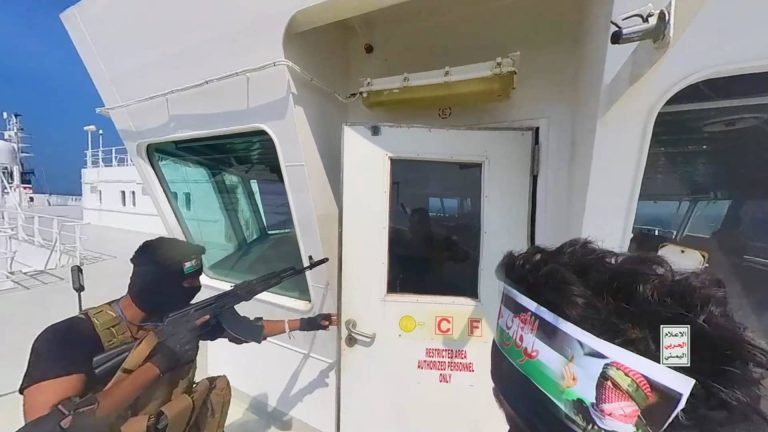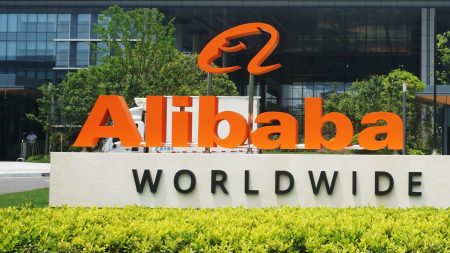With the Israeli-Hamas war ongoing, it can be tempting to tune out headlines regarding the Houthi attacks out of Yemen on merchant vessels in the Red Sea. However, that would be ill-advised for investors — considering the risks of the deteriorating situation to global markets and world economic price stability. The Red Sea — between Africa with Egypt and Sudan on one side and Asia with Saudi Arabia and Yemen on the other — is a key trade route because it allows ships to avoid going around Africa to transport goods between Asia to Europe. The Red Sea feeds into the Suez Canal, which connects to the Mediterranean Sea. The recent spike in aggression over the past few weeks by the Iranian-backed Houthi militants along the Middle East shipping route is causing trade disruptions that could reignite inflation at a time when it was finally cooling and could lead to a broader conflict in the region. Houthi leaders have said their group’s actions in the Red Sea are in solidarity with Hamas, the terrorist organization that attacked Israel on Oct. 7, and would continue until more humanitarian aid arrives for Palestinians in Gaza. The U.S. and its international allies on Wednesday delivered an ultimatum: “The Houthis will bear the responsibility of the consequences should they continue to threaten lives, the global economy, and free flow of commerce in the region’s critical waterways.” The U.S. and its allies have been calling for an expansion of an existing multination naval task force that aims to safeguard passage in the Red Sea and the nearby Gulf of Aden. Major transport companies have been avoiding the area by diverting shipping away from the Red Sea and sending their vessels around Africa, creating longer and more expensive trips to ferry goods between Asia to Europe. Both Goldman Sachs and JPMorgan analysts looked at Covid-era trade disruptions and a 2021 ship grounding in the Suez Canal as parallels to gauge the severity of the current situation. Here’s what they found. For starters, to better understand the potential impact of a sustained need to re-route shipments, the analysts at Goldman Sachs noted that shipping goods from Shanghai to Rotterdam in the Netherlands via the Cape of Good Hope, around the bottom of Africa, versus the traditional route through the Suez Canal increases shipping times by a little over 30% as the distance increases from about 10,500 miles to about 13,800, and shipping times increase from 29 days to 38 days. Over at JPMorgan, the analysts said, “Under a scenario in which 100% of container trade between the Far East/Middle East/Indian Sub-Continent and Europe (both directions) was diverted away from the Suez Canal, this could add 9% to global container TEU-mile trade (source: Clarksons), which implies a reduction of 9% in effective capacity.” For a frame of reference, the analysts said global port congestion during Covid absorbed about 10%-12% of capacity at its peak. TEU stands for “twenty-foot equivalent unit,” a standard measure for cargo containers. The timing of the increased Red Sea attacks is also a factor because it’s happening just ahead of the Chinese Lunar New Year when shopping activity in China tends to pick up. Making matters worse are dry conditions at the Panama Canal, which connects the Atlantic and Pacific oceans. It’s a key trade route between the U.S. and China. About 40% of U.S. container traffic passes through the Panama Canal. The area is suffering from a drought that has impacted the number of vessels that can pass through at any given time. Additionally, it’s important to factor in that unlike prior recent examples that disrupted trade — the Covid pandemic and the 2021 Suez Canal Ever Given grounding — the current Red Sea disruption has a military component, with the U.S. and its international partners looking to step up patrols on the waters to discourage further violence. JPMorgan highlighted the Suez Canal blockage in March 2021 as a reference point — noting that back then there was no issue at the Panama Canal and geopolitical hotspots around the world were more stable during the pandemic. Back then the task was simple, refloat the Ever Given. Freeing up the current bottleneck is about putting an end to pirate attacks by what was once — and may soon be again — considered a terrorist organization by the United States government. On the other hand, there are certain structural advantages we have working in our favor this time around — meaning we could get right back on track once the fighting ends. Goldman Sachs doesn’t think we’re looking at a Covid-era type disruption for three reasons: (1) more capacity than we had then; (2) more slack in the labor market as shortages in 2020 to 2022 greatly contributed to port congestion; (3) and back then, the demand was for goods, whereas now consumers are more focused on services. There are secondary effects to all of this, oil prices being an obvious one. Traveling 30% further to avoid a military hotspot means 30% more fuel is needed. Increased military activity would also amount to increased oil demand. U.S. and international oil prices were working on back-to-back gains Thursday after strong gains on Wednesday broke four-session losing streaks. Humanitarian issues aside, as investors we need to acknowledge that the situation is already beginning to impact potential profits for 2024. Supply chain disruptions, elevated freight costs and higher energy prices were key sources of input cost pressure that, in turn, contributed to the greatest bout of inflation we’ve seen in decades coming out of Covid. The latest developments in the Red Sea are sparking a resurgence of those freight and logistics cost headwinds and put expected interest rate cuts in the coming months from the Federal Reserve in doubt. We still expect cuts this year, but the timing and the magnitude of the cuts become less certain as this drags on. The bulls must be cautioned against baking them into higher price targets for the stock market. That’s because we’ve painfully learned for more than a year now that higher input costs lead to higher selling prices as companies look to protect profit margins. The last thing the Fed wants to do is cut rates only to learn shortly after that the rise in the costs of goods is reaccelerating due to this trade turmoil. Another risk of not addressing the conflict swiftly: We may well be looking at either a crunch on corporate profit margins, new price hikes, or more layoffs. To protect profits, companies could opt to absorb the costs rather than take further price action or pass the higher costs through to consumers. The issue with this latter price dynamic solution is consumers may not be able to absorb another round price hikes given the increases they’ve already endured. Neither scenario is positive for equity prices. The former would be more ideal from the Fed’s perspective, so long as it doesn’t mean broad-based layoffs. The Fed’s dual mandate is to maximize employment and foster price stability — not to protect corporate profits. Layoffs would be a third option to protect profits without raising prices, but companies have already trimmed the fat. It’s not clear how much of an offset further layoffs can be without negatively impacting operations. Bottom line In highlighting these risks, we don’t want the give the impression that we’ve turned bearish on the market. We simply wanted to bring to members’ attention the trade disruptions and military implications that are at play in a volatile region already beset by war. It’s yet another reason why raising cash Tuesday after such a strong 2023 was a smart move. We see plenty of opportunities out there following a year in which many companies were left for dead in favor of anything related to artificial intelligence. However, we have to acknowledge that as good as a company is and as strong as their management team may be, some things are out of their control. The only thing we can say for sure is that the best case scenario for everyone is a quick resolution or a major deescalated of the conflict in the Red Sea. (See here for a full list of the stocks in Jim Cramer’s Charitable Trust.) As a subscriber to the CNBC Investing Club with Jim Cramer, you will receive a trade alert before Jim makes a trade. Jim waits 45 minutes after sending a trade alert before buying or selling a stock in his charitable trust’s portfolio. If Jim has talked about a stock on CNBC TV, he waits 72 hours after issuing the trade alert before executing the trade. THE ABOVE INVESTING CLUB INFORMATION IS SUBJECT TO OUR TERMS AND CONDITIONS AND PRIVACY POLICY , TOGETHER WITH OUR DISCLAIMER . NO FIDUCIARY OBLIGATION OR DUTY EXISTS, OR IS CREATED, BY VIRTUE OF YOUR RECEIPT OF ANY INFORMATION PROVIDED IN CONNECTION WITH THE INVESTING CLUB. NO SPECIFIC OUTCOME OR PROFIT IS GUARANTEED.
With the Israeli-Hamas war ongoing, it can be tempting to tune out headlines regarding the Houthi attacks out of Yemen on merchant vessels in the Red Sea. However, that would be ill-advised for investors — considering the risks of the deteriorating situation to global markets and world economic price stability.
Read the full article here









